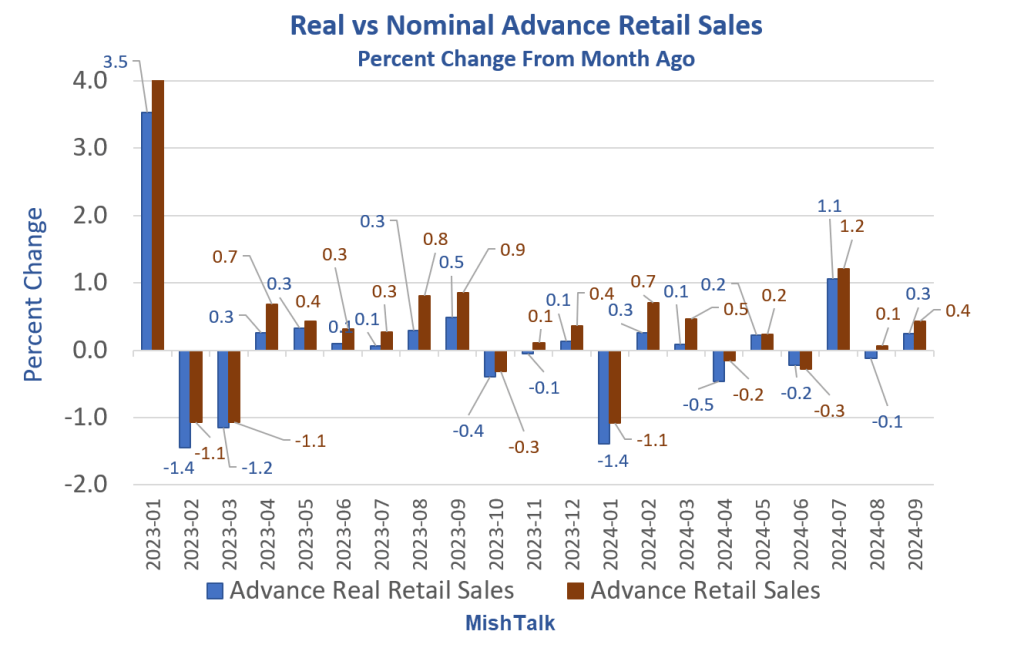In September, retail sales rose 0.4 percent, up 0.3 percent inflation adjusted. Here’s where consumer spent their money.

According to the Census Department Advance Estimate, retail sales rose 0.4 percent in September.
Advance estimates of U.S. retail and food services sales for September 2024, adjusted for seasonal variation and holiday and trading-day differences, but not for price changes, were $714.4 billion, an increase of 0.4 percent (±0.5 percent) from the previous month, and up 1.7 percent (±0.5 percent) from September 2023. Total sales for the July 2024 through September 2024 period were up 2.3 percent (±0.5 percent) from the same period a year ago.
The key line above is “adjusted for seasonal variation and holiday and trading-day differences, but not for price changes.”
Those are nominal numbers, not adjusted for inflation. My charts below show both.
Month-Over-Month Nominal Details
- Retail Sales: +0.4%
- Excluding Motor Vehicles and Gasoline: +0.7%
- Motor Vehicles: +0.0%
- Food Stores: +1.0%
- Nonstore Merchants (e.g. Amazon): +0.4%
- Gas Stations: -2.9%
Real vs Nominal Retail Sales Percent Change From Month Ago

Real vs Nominal Advance Retail Sales in Millions of Dollars

Real Retail Sales Detail – Millions of Dollars

As you can see, inflation-adjusted retail sales have gone nowhere.
The Cost of Food Increased 0.4 Percent in Sept
On October 10, I noted The Cost of Food Increased 0.4 Percent in Sept, What’s in Your Basket?
Food Away from Home vs Food at Home Month-Over-Month
- In the prior 19 months, the monthly price of food fell 3 months, was unchanged 6 months, rose 0.1 percent 5 times, rose 0.2 percent 3 times, and more than 0.2 percent only twice.
- That string of good news for food at home ended in September with a 0.4 percent jump.
- In the prior 19 months, food away from home rose at least 0.4 percent on eleven occasions, and was never negative or zero.
Also see CPI Good News on Shelter and Energy But Food Jumps
The vaunted US consumer is little more than a mirage of inflation. The basket of consumer spending shifts according to prices.
